What to Do for Shampoo Bar Waxy Hair
How to Successfully Transition to a Shampoo Bar With Hard Water
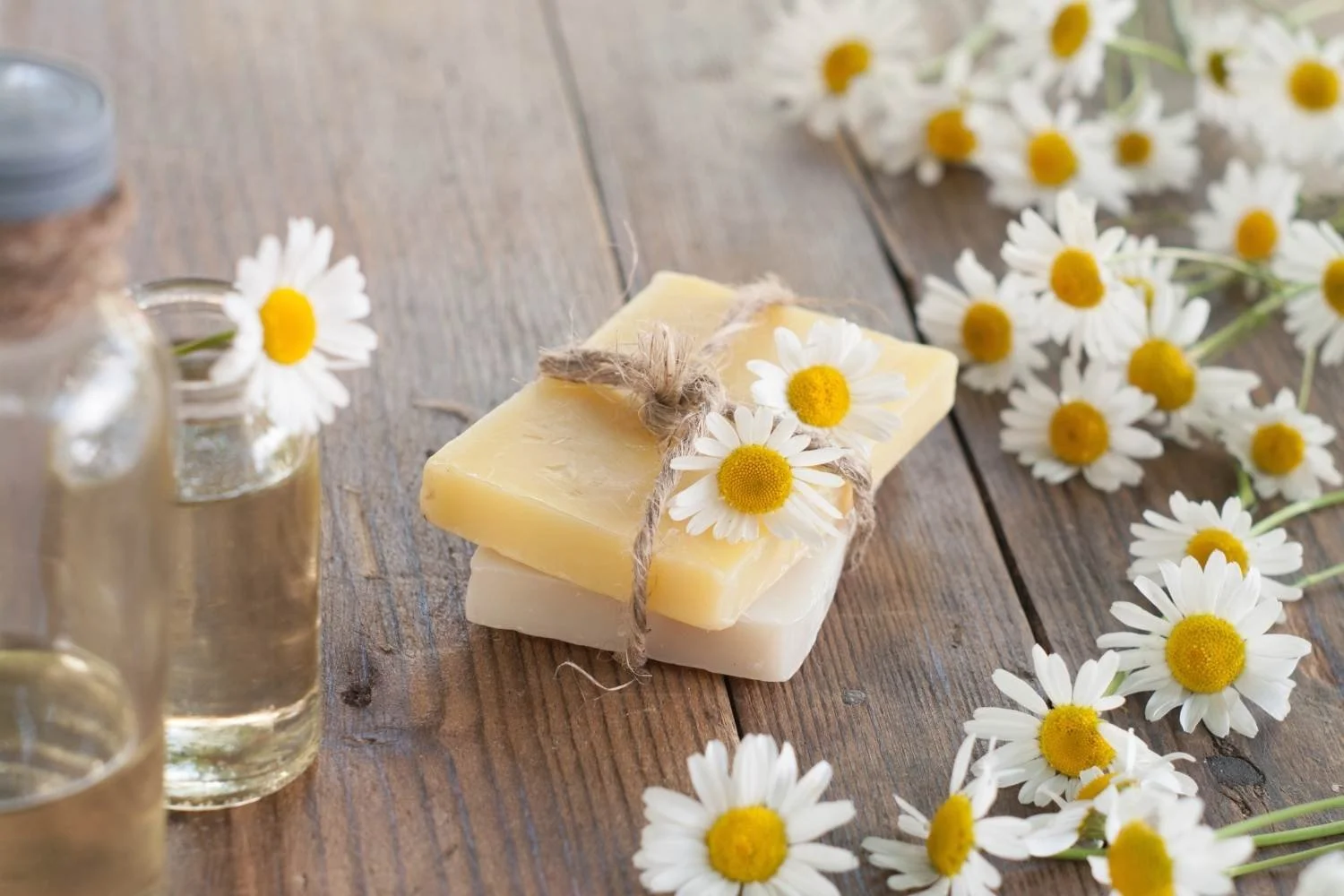
This blog uses affiliate links, all advertising is ethically-screened. See my disclaimer for more details
Have you lot been wondering why shampoo bars exit your hair coated in wax?
Or why some people transition to them quickly, merely you're looking slimier with each wash...
And what's the deal with apple cider vinegar? Is smelling like your local chippy really necessary?
After wasting money and dissentious my hair, I accept finally worked out how to tell which confined work and which don't. I get asked and so oft that I thought I'd write about information technology because I am a huge fan of solid eco-friendly shampoo.
No matter what type of water you have, there are shampoo bars that will work for you. Keep reading until the terminate to find out which bars work best in hard and soft h2o.
This post has been created as function of a series of eco-friendly living guides, you can view the rest by clicking ' free guides ' in the navigation menu. All shampoo bar content has been grouped together under 'topics.'
In this blog post:
-
What is the difference between soft and hard h2o?
-
Why does water type affair with solid shampoo?
-
Why do some shampoo bars make your hair feel waxy?
-
Is an apple cider vinegar rinse necessary?
-
How exercise y'all know the pH of a shampoo bar?
-
How exercise you overcome the transition phase when switching to a shampoo bar?
-
Which type of shampoo bars work in hard h2o?
-
How do yous know if a shampoo bar contains surfactants?
-
What'south the deal with SLS?
-
What is the deviation betwixt sodium lauryl sulfate and sodium coco sulfate?
>> A list of shampoo bars that piece of work in all water types <<
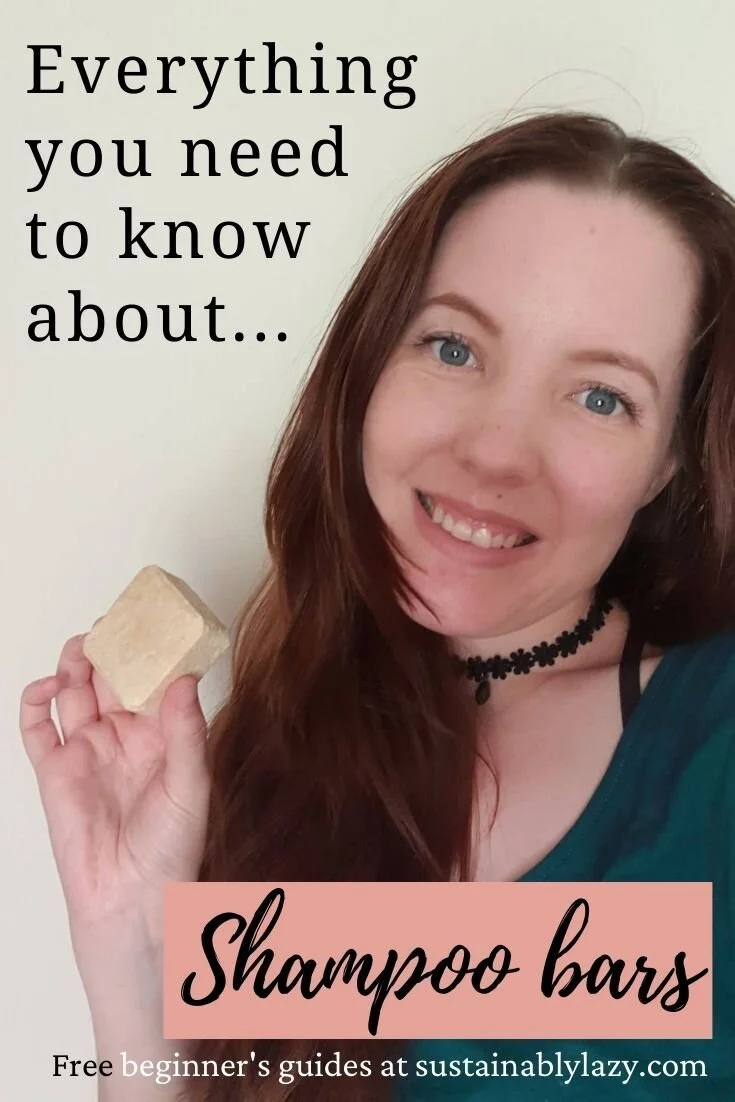
i. What is the difference betwixt soft and hard water?
The difference between soft and hard water is the presence of minerals, mainly calcium and magnesium. The more minerals in your water, the harder it is.
Rainwater is naturally soft. Minerals are added naturally as the water flows through rocks and the footing before ending upward in our h2o systems.
In the South and East of England, water collects higher levels of minerals due to the chalk and limestone. In the Northward and W where there is granite, the water is much softer.
Soft water tends to have higher concentrations of sodium and sometimes tastes saltier.
Yous can find out your water type by going to the website of your local h2o provider, but if you are prone to limescale in your appliances (kettle, toilet, shower) then you probably take hard h2o.
The ten worst areas for difficult water in the Britain are:
-
Dorset
-
Essex
-
Gloucestershire
-
Hampshire
-
Hertfordshire
-
Kent
-
Oxfordshire
-
Surrey
-
Sussex
-
Wiltshire
The U.s. States with hard water
Some American states are about entirely consumed by very hard water; well-nigh of these are on the western side of the state. Whereas other states possess both difficult and soft h2o so your water hardness will depend on your urban center.
Very hard water:
-
Indiana
-
Wisconsin
-
Florida
-
Utah
-
New Mexico
Difficult water:
-
Ohio
-
Michigan
-
Kentucky
-
Kansas
-
Oklahoma
-
Texas (W)
-
Montana
-
Nevada
-
Idaho
-
Las Vegas
-
Wyoming
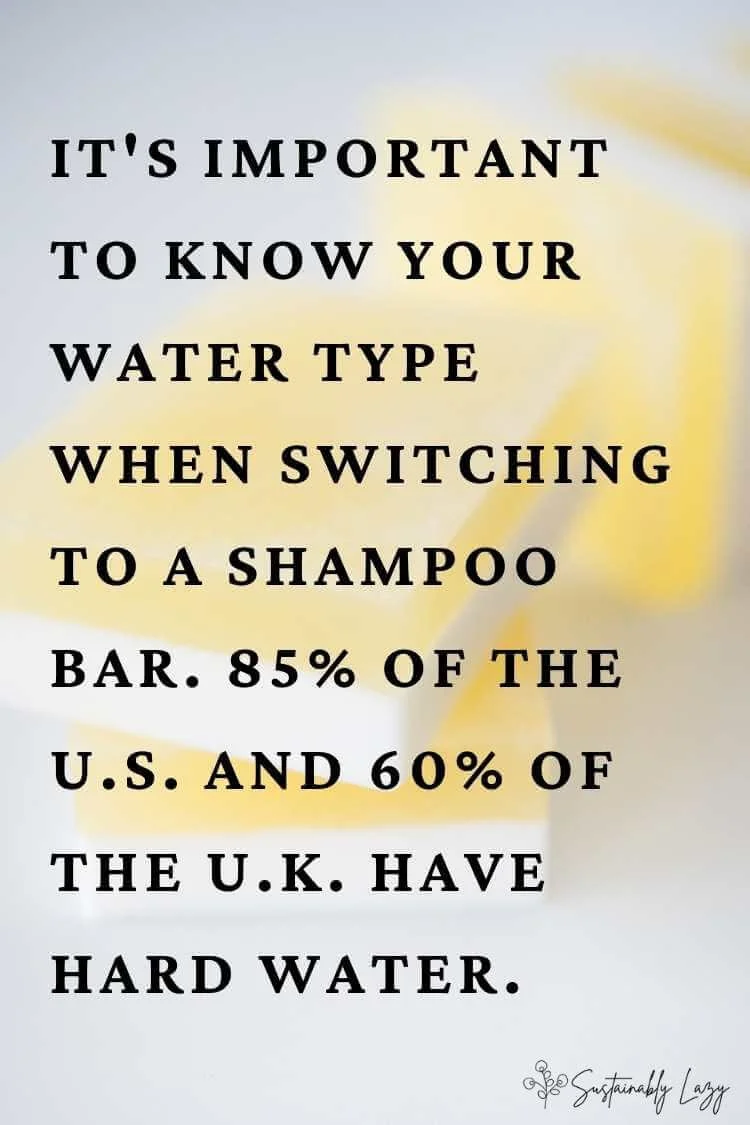
2. Why does water blazon matter with solid shampoo?
H2o blazon is and so important when choosing a shampoo bar.
If you have soft water, y'all can pretty much choose any bar yous like and it'southward much more than likely to work. That doesn't hateful it will be good for your pilus though.
If you take difficult water, you volition struggle to transition to most solid shampoo confined on the marketplace due to the mineral content in your h2o.
The most important piece of information you need to know, regardless of your h2o type, is:
Shampoo bars are not all made the aforementioned.
Read on to find out why and learn which solid shampoo is effective in hard and soft h2o.
3. Why do some shampoo bars brand your hair feel waxy?
The reason that some bars leave your hair feeling waxy is that they are literally confined of lather.
They are fabricated from saponified oils, which is the technical proper name for mixing oils (like coconut or olive oil) with an alkali to make lather. It's obviously much more complex than that just you get the gist.
If y'all take hard water, the soap molecules bind to the minerals in the water and leave waxy deposits in your pilus. Fifty-fifty after washing it multiple times, your hair will look greasy and harbinger-like.
If you lot have soft water, mineral build-up shouldn't be a problem. If you have problems (which yous probably will) it's due to your hair blazon and the pH of the bar. There is more than about this in the side by side department.

4. Is an apple cider vinegar rinse necessary?
A shampoo bar visitor once told me that I needed to use an apple cider vinegar rinse to assistance my hair transition to their bar.
This put me off completely, but I had already bought the friggin' thing.
Fast forward a year and I finally understand why.
The next fleck is science… but I've kept it simplistic so please comport with me.
'PH level' refers to how acidic something is. Your peel naturally has a pH level of 4-v, which means it is acidic (7 is neutral).
Despite being made from natural oils, soap is alkaline with a pH of around ix. It is an anionic detergent that changes the chemistry of the scalp when y'all use information technology instead of shampoo.
![[pH1 is extremely acidic, pH7 is neutral, pH10 is the most alkaline]](https://images.squarespace-cdn.com/content/v1/5bb8cd5aa09a7e4c80cb9fd8/1592310348031-UGLIHIBQW1I8AOQG8J8O/Top+Tip_+If+you%27ve+bought+a+soap-based+shampoo+bar+that+leaves+your+hair+waxy+-+use+it+like+a+bar+of+soap+.+pH+levels+are+essential+when+choosing+a+shampoo+bar)
[pH1 is extremely acidic, pH7 is neutral, pH10 is the virtually alkali metal]
When lather comes into contact with water it leaves behind element of group i residues in the strands of your pilus. This builds up the more you lot wash your hair and eventually your pilus may go damaged.
Using alkaline products on your hair can lead to:
-
cuticle damage
-
hair breakage
-
frizz
-
irritation
[Source]
Soap-based shampoo bar sellers say you should do a vinegar rinse to bring your scalp acidity back downwardly (think lather pH is 9-x) simply vinegar has a pH level of 2-3 which is much more acidic than our skin. It might help rebalance your scalp, just it all feels very experimental to me.
Vinegar likewise won't remove the mineral deposits from your pilus, simply I'll talk more about that in department 6 (the transition phase).
v. How do yous know the pH of your shampoo bar?
It is physically impossible to make a soap-based bar that is not an alkaline (source = soap-maker), so if the ingredients await like the ones in this list I'k almost to share, yous will need an apple cider vinegar launder, or some other pH balancing handling:
Common main ingredients in a soap-based shampoo bar:
-
Sodium Olivate (olive oil),
-
Sodium Cocoate (coconut oil),
-
Sodium Sunflowerate (sunflower oil),
-
Sodium Shea Butterate (shea butter),
-
Sodium Castorate (brush oil),
-
H2o (aqua) & a preservative,
-
Glycerine.
Bars that use surfactants will be able to command their pH level (which is usually between iv.5 and 6), but that doesn't mean they are created equally, then it is all-time to use a trustworthy brand or enquire if you're unsure.
If you have dyed or bleached your pilus, it'southward best to avoid using an alkaline shampoo as it will cause the colour to fade.
Note: Obviously everyone'south pilus and pare are different, and then if you're happy with your lather-based bar then that is fine.
![[My hair looking gross while trying to transition back in 2018]](https://images.squarespace-cdn.com/content/v1/5bb8cd5aa09a7e4c80cb9fd8/1592313709451-HJWJVZF7LCRH7W6KEJKC/transition+phase+shampoo+bar+hard+water)
[My hair looking gross while trying to transition back in 2018]
6. How do you overcome the transition phase when switching to a shampoo bar?
When you start using a soap-based shampoo bar and your hair feels waxy, it is known as the "transition phase."
Now, I'g no expert (I accept never made a bar of soap), but as someone who'southward tried multiple bars unsuccessfully, I'm suspicious of this term.
Some sellers claim that the transition phase is necessary to remove the build-upward of chemicals, like silicones and parabens, only I'd been using natural liquid shampoos for years before trying a solid bar. So how does that work?
Baking soda can impairment your hair
One way to cope with the "transition phase" is by using baking soda. To be fair, blistering soda does remove the oil from your hair and get out it looking clean. It is, however, a strong alkaline (see above nautical chart).
I spent 5 months trying to transition while learning from people who were practising the "no-poo method." Want to know how information technology went?
![[my hair when I started using baking soda - it was so clean and made me so optimistic]](https://images.squarespace-cdn.com/content/v1/5bb8cd5aa09a7e4c80cb9fd8/1592313969843-4D8YP72FJC88AQPVTVJN/transition+phase+to+an+eco+friendly+natural+shampoo+bar)
[my pilus when I started using baking soda - it was and then clean and made me so optimistic]
My experience of transitioning and the no poo method
When transitioning to soap-based shampoo bars, the only time I didn't wait like a greasy slob was when I used baking soda. I used it no more than once or twice a fortnight. As I said earlier, I've e'er washed my hair in one case a calendar week (maybe twice if I'm going somewhere dainty on a random day).
Despite using an apple cider vinegar rinse subsequently, my hair started to fall out in tiny clumps, I had a flaky scalp, and my pilus would snap in my fingers (I accept long, thick hair and this has never happened to me before).
I didn't stop in that location. I tried to use other natural ways of transitioning and conditioning (various foods, flours, powders) recommended by the "no poo method," inspired by their successes. I was convinced that shampoo was manmade, synthetic and at that place must be a way to survive without it.
Eventually, I just wanted overnice hair over again. I realised that the success stories of transition phases and blistering soda were all word of mouth and non bear witness-based.
Possibly a transition to soap and water can be done with the softest water and a specific pilus type, I can't say for sure, but seeing my hair fall out was enough to send me dorsum to depression-poo liquid shampoo (still gratuitous from SLS, parabens and silicones).
Once I tried shampoo bars again, they independent naturally-derived cleansing agents and I never had to transition. It's been a year and a half and my hair feels lovely and healthy.
The following sections will focus on the other type of shampoo confined, which exercise not need a transition stage.
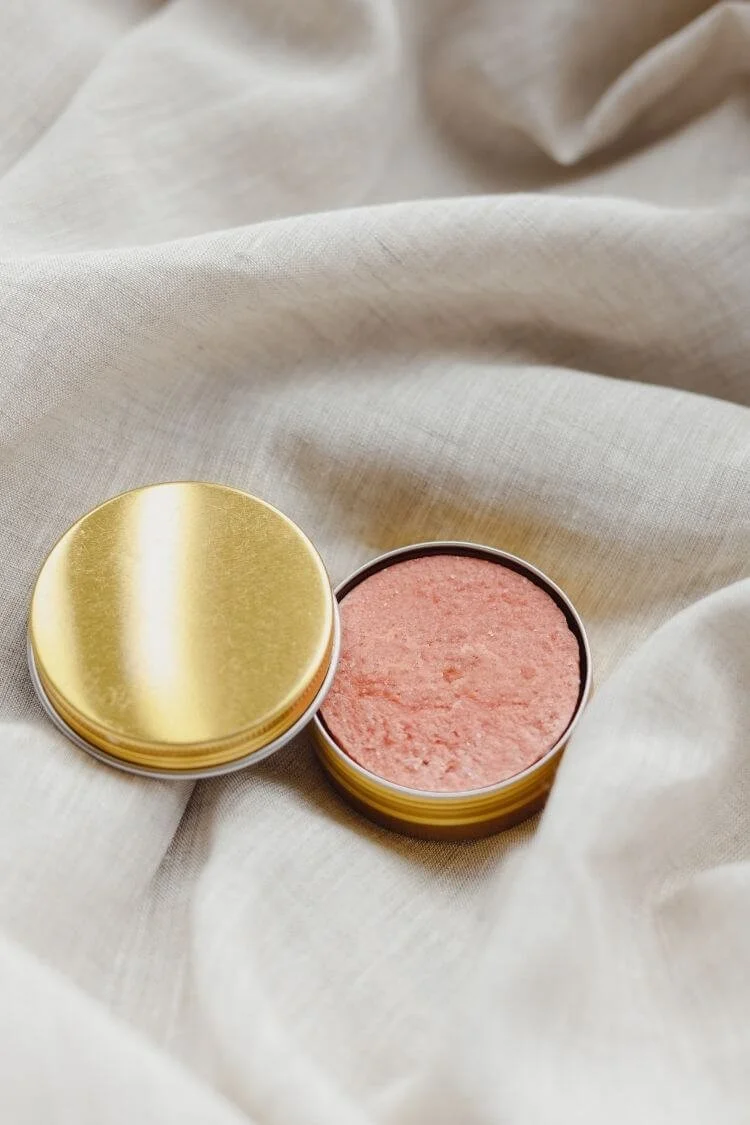
7. Introducing solid shampoo for difficult and soft water
Now that we've discussed soap-based shampoo bars, I'one thousand moving on to the 2nd type. Surfactant-based solid shampoo. Sometimes known as 'detergent-based' or 'syndet' which sounds harsh, merely it doesn't have to exist.
A surfactant "increases the wetting properties of a liquid."
Information technology is a cleansing ingredient, besides used in liquid shampoo, that removes dirt, oil, grease (and mineral deposits!) from your hair.
Shampoo bars that use naturally-derived surfactants are very effective in hard water. Unlike lather-based bars, they don't exit a greasy, waxy, lather scum residue and you should look clean the first time yous apply it.
As you know, hair type and thickness can vary dramatically. A adept shampoo bar maker volition use multiple surfactants (at unlike strengths) to create the perfect pH for specific hair types.
In that location is no transition stage when you lot switch to a surfactant-based shampoo bar and no need for an apple tree cider rinse. I exercise like to use a conditioner bar also though. Mainly because it'south a totally unlike product and benefits my thick hair, but I know some people are happy without it.
viii. How do you lot know if a shampoo bar uses surfactants?
I listed the ingredients found in a soap-based bar in section 5. While it's easy to recognise a bar of soap due to its main ingredients existence oils and butter, a surfactant has a more "chemical" sounding name.
It is important to call up surfactants can differ in how much they foam, how mild they are, their pH level, manufacturing quality, and source. A lot of scientific discipline and testing has happened behind the scenes, which means they tend to be more expensive. I accept noticed that the cheaper bars use palm oil and the expensive ones employ coconut oil.
There are 4 different categories of surfactants. Some are more cleansing than others and some can be irritating in high quantities. They are not all naturally-derived - some can exist sourced from petroleum.
To avoid being irritating, a shampoo bar may incorporate multiple surfactants which let it to increase its cleansing power and keep it gentle on your skin.
Remember of it similar this, a small amount of three ingredients, is milder than a big corporeality of one.
The following surfactants are derived from kokosnoot or palm fruits and commonly used in shampoo bars:
-
Sodium Cocoyl Isethionate
-
Sodium lauryl Sulfoacetate
-
Sodium Coco Sulfate
-
Decyl Glucoside
-
Lauryl Glucoside
-
Coco Glucoside
-
Cocamidopropyl Betaine
-
Disodium Cocoamphodiacetate
-
Disodium Lauryl sulfosuccinate
NOTE: "natural" is an unregulated term oft manipulated in marketing. Both shampoo and soap take to become through a chemical process to make it into the last product.
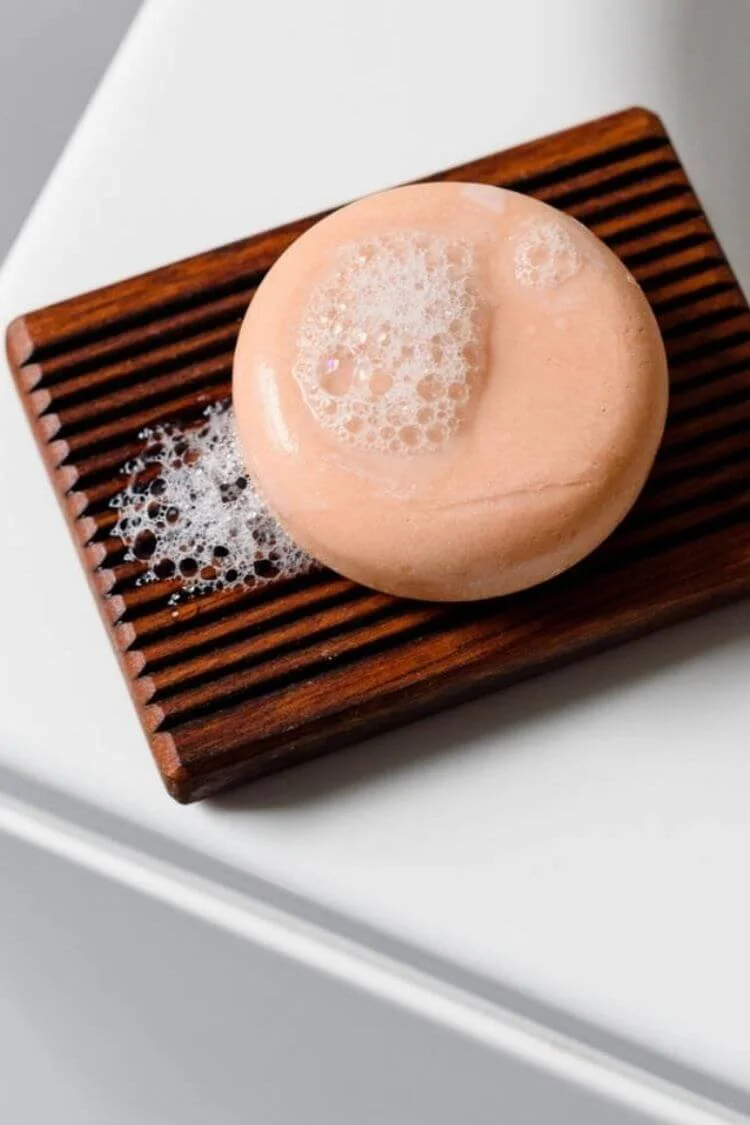
ix. What'southward the deal with SLS and why do people avoid information technology?
Sodium lauryl sulfate (SLS) gets a lot of bad press. It is widely used in all sorts of commercial products such as: face launder, shower gel, toothpaste and household cleaners because it is cheap to produce and highly constructive.
SLS tin can be derived from petrol or palm oil. You should ever make sure that the company making the shampoo uses naturally-derived ingredients and sustainable palm oil that is certified past a third party.
The main reason people avoid SLS is that information technology is a skin irritant. It tin can be harsh on your whole body likewise as your scalp, and in some extreme cases has caused pilus loss or weakening.
Personally, SLS makes me crawling (a lot) and gives me dandruff, but I exercise have very sensitive skin. It can be specially aggravating to people with pare conditions, like eczema.
There are a lot of false claims about it on the net, including rumours it causes cancer which has not been backed up by evidence. It'due south also worth noting that not all products using sodium lauryl sulfate are equal.
Lush uses SLS in a lot of their shampoo confined. I personally don't run into this as an issue. Lush are transparent about their ingredients, product and utilize sustainably-sourced palm oil. They are strongly against beast testing and hold their suppliers to loftier standards.
If you are happy using a bar that is made from sustainably sourced SLS and it doesn't irritate y'all, then what is the consequence?

10. What is the difference between sodium lauryl sulfate and sodium coco sulfate?
Sodium coco-sulfate is a gentle alternative to SLS and SLES. It is derived from coconut oil and has no known wellness concerns. Many ethical, natural brands that I adore and respect employ this ingredient in both liquid and solid shampoo. The Soil Association also considers it adequate when certifying brands as organic.
Lately, there has been a lot of criticism for this surfactant, commonly by soap-makers suggesting sodium coco-sulfate is besides similar to SLS and shouldn't exist considered a "natural" ingredient.
In some ways this is correct, both surfactants are fabricated in the same way, merely the claims people are making are not always completely accurate.
The difference between SLS and SCS is:
-
SLS is made using isolated lauric acid. Lauric acrid is a fatty acrid found in palm oil, coconuts, human breast milk, cow's milk, and petroleum jelly from crude oil.
-
SCS is made using whole coconut oil. Coconut oil contains lauric acid too every bit several other fatty acids.
By using all the fatty acids in coconut oil, the final product has a much more than complex structure with large molecules that preclude SCS from penetrating the skin and causing irritation.
SLS, notwithstanding, has a simple structure and minor molecules which let it to penetrate the outer layer of the skin and irritate underlying peel cells.
It's always important to consider if the information is coming from a biased source.
I accept noticed that the people criticising sodium coco-sulfate and saying it's "derived from SLS" are commonly on blogs of companies selling products that don't apply SCS (including some lather-based shampoo bar brands). Claiming that other companies are lying well-nigh beingness SLS-free is a very big play on words - sodium coco-sulfate contains lauric acid, not SLS.
These articles often utilize the "natural vs chemic" argument also which I detect slightly bizarre as lather too goes through a chemical process when information technology is being made. It'southward non like any type of shampoo bar grows on a tree…
Using SCS in shampoo bars
Sodium coco sulfate is withal a sulfate. If you have curly hair, y'all may want to avoid information technology.
I accept used SCS in a few dissimilar bars now, some bars have used a mixture of surfactants and pH balanced their shampoo. Other bars (unremarkably the inexpensive ones) accept only 1 surfactant and this makes their cleaning power a lot harsher.
Similar I've already mentioned, not all confined are made with the same or are tested to the same high standards. However, different people have different preferences and I do call back in that location is a place for bars with stronger cleaning power.
Tap to pin this to your zero waste Pinterest Board:
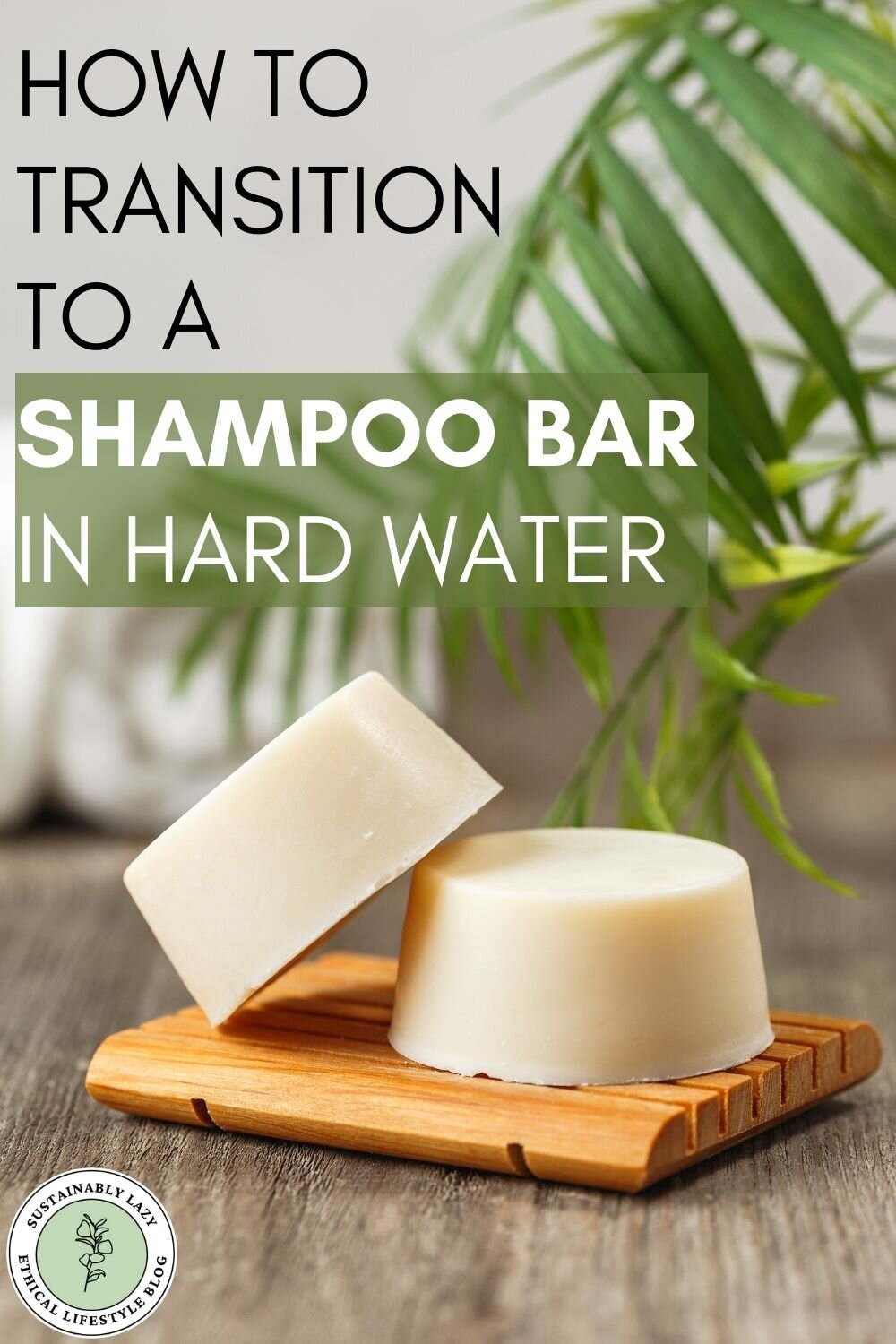
Which shampoo confined piece of work in hard (and soft) h2o?
The post-obit shampoo confined all employ surfactants and so should work in hard h2o.
If yous've been using cheap mainstream shampoos for a long time and think y'all've got a build-up of silicone, you will need to remove it by washing your pilus with a clarifying shampoo containing surfactants.
I would recommend using an eco-friendly liquid shampoo such as Faith in Nature (comes in 100% recycled bottle simply contains the sulphate ALES) or Greenish People which contains SCS)
In one case your pilus is free from production build-up then I'd endeavor a shampoo bar.
If you're using a product containing silicones (dimethicone) yous will probably be unsuccessful at swapping to a sulphate-free shampoo bar.
If you lot're unsure nearly which bar suits your hair blazon then take a look at this: which shampoo bar suits your pilus type.
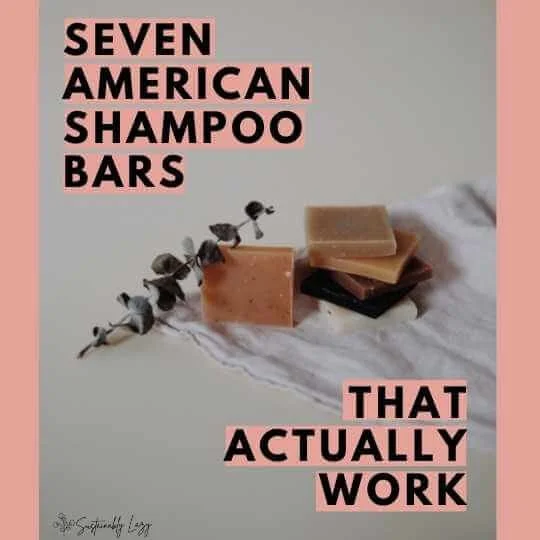

A note on storing shampoo bars
Your shampoo bar will concluding longer and exist less probable to crumble if you dry it in between uses. A lather dish that allows the h2o to drain abroad without pooling underneath is ideal.
Hither are a couple of options:
-
Bamboo soap dish (UK)
-
Bamboo soap dish (US)
Have yous made the switch to shampoo bars even so?
Share your feel in the comments below (even if information technology is simply to reassure me I'm not the but person who walked around looking similar I never washed for months).
If you found this post informative, delight tap the share push button below. Equally a work at abode mum who is boycotting Amazon and avoiding abrasive pop-up ads (the usual ways to make money from your website), every share means the world to me. Y'all can also support my content by ownership me a coffee or following me on Instagram. Thanks for being here - Sophie <3
TAP TO SHARE WITH YOUR FRIENDS:
Source: https://www.sustainablylazy.com/blog/shampoo-bar-transition-hard-water-uk
0 Response to "What to Do for Shampoo Bar Waxy Hair"
Enregistrer un commentaire